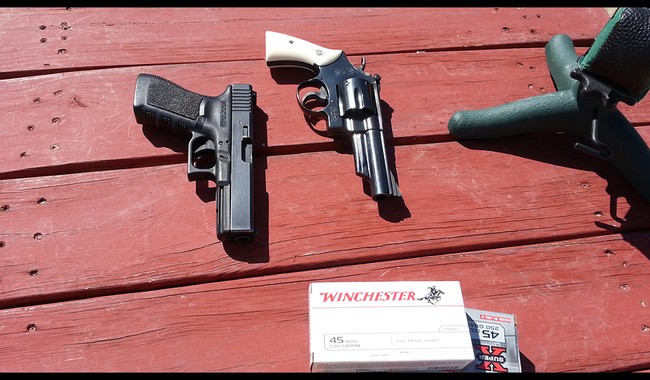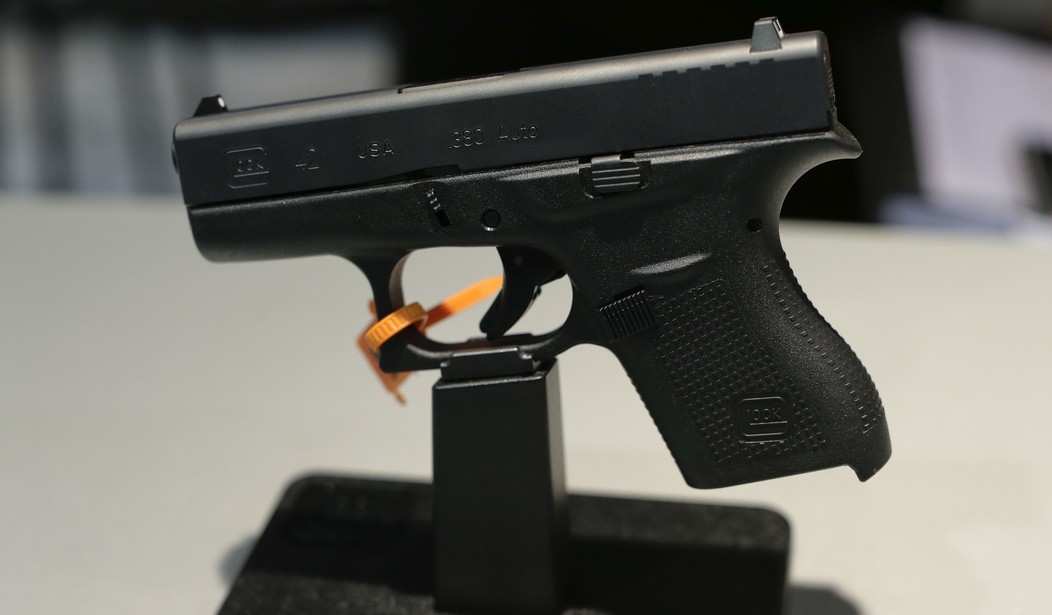In a piece of sad news for gun owners, shooters, Second Amendment advocates, and concealed-carry folks, we note on Wednesday the passing of Gaston Glock, who broke considerable new ground in the design of semi-auto handguns. His guns were something new; polymer-framed, striker-fired, tough, reliable, and aimed directly at the police and military markets, although they gained a big following among recreational shooters and carry advocates. And, as one might expect, a lot of misconceptions grew up around Mr. Glock's creations as well.
Gaston Glock, the man responsible for developing the namesake weapon, died on Wednesday at the age of 94.
Glock developed the famous handgun in the 1980s, when the Austrian military was looking for a new, innovative weapon. Until then, the Glock company had made military knives and consumer goods including curtain rods.
Glock assembled a team of firearms experts and came up with the Glock 17, a lightweight semi-automatic gun largely made of plastic. The revolutionary design – with a frame made of a high-strength, nylon-based polymer and only the slide made of metal – beat several other companies' blueprints and secured his upstart outfit the contract.
The easily assembled weapon became a global hit, with the Austrian winning loyal followings among police and military across the world.
"Global hit," if anything, is an understatement. The various striker-fired Glock sidearms are damn near ubiquitous among United States police departments. Internationally, at least 63 nations use Glock sidearms for police and/or military purposes. The United States military uses the Glock 19, and more locally, the Alaska State Police rely on the .40 caliber Glock 22 Gen 4 pistol as their standard sidearm, and as we've seen only recently, they know how to use them. Even former Presidents see the appeal of the Glock.
Of course, as with firearms in general, there are a lot of misconceptions about the Glock handguns, based in part on their being a polymer-framed gun.
The Glock has been referenced in numerous films and rap songs, including Snoop Dogg's "Protocol" and Wu-Tang Clan's "Da Glock."
U.S. soldiers found toppled Iraqi President Saddam Hussein hiding with a Glock in a hole in the ground in 2003. They later presented that weapon to U.S. President George W. Bush.
Glock faced criticism from gun-control advocates who complained that he popularized powerful guns and made them easy to conceal and hold more ammunition.
These latter claims are utter nonsense; Glock's semi-auto handguns never approached major-caliber revolver cartridges in power level, with the possible exception of the 10mm G20, G29, and G40 pistols. As for "easy to conceal," that is likewise ridiculous. At the time of the introduction of the Glock, there were concerns from the usual gun-control suspects that the "plastic" Glock would enable a carrier to bypass, for example, airport security; a line from the movie "Die Hard 2" didn't help:
Luggage? That punk pulled a Glock 7 on me. You know what that is? It's a porcelain gun made in Germany. It doesn't show up on your airport X-ray machines here and it costs more than what you make in a month!
This is, to be blunt, crap. There never was a Glock 7, to start with; the Glock's frame is polymer, not porcelain; and the slide, barrel, most of the magazine, springs, pins, and lockwork are all metal and will show up, very clearly, on an X-ray. The Glock wasn't even the first such gun made with a polymer frame; that honor belongs to the Heckler&Koch VP70, introduced in 1970, although this particular HK piece never attained anywhere near the success of the Glocks and, as far as I can ascertain, never sold in the United States.
What the Glock is, is this: A high-quality, durable, reliable sidearm intended for police and military use but which found wide acceptance among shooters everywhere. My own concealed-carry piece is a Glock 36, their compact, single-stack .45ACP (I've always reckoned that if I can't sort out a problem with six rounds of .45ACP, it's likely already out of control anyway), and I have a second Glock, (pictured below) a G21, the full-size, 13-round, double-stack .45ACP.
My Glocks lack the visual appeal (to me, anyway) of my beloved six-guns, true, and they don't have the historical penchant of the 1911, but I like them for what they are best suited for; concealed and open carry. The G36 carries very easily in an outside-belt paddle holster and shoots far better than one would have any reason to expect from a 3" barreled .45. The G21 is heavy and has a bulky frame, but I have big hands; the big double-stack .45 suits me just fine.
 Gaston Glock's signature creation has earned him his fame in the annals of firearms history. Glock sidearms are tough and reliable, earning them gold-standard status in their own right. He changed the world of sidearms, and the shooting sports community today is poorer for his passing.
Gaston Glock's signature creation has earned him his fame in the annals of firearms history. Glock sidearms are tough and reliable, earning them gold-standard status in their own right. He changed the world of sidearms, and the shooting sports community today is poorer for his passing.















Join the conversation as a VIP Member